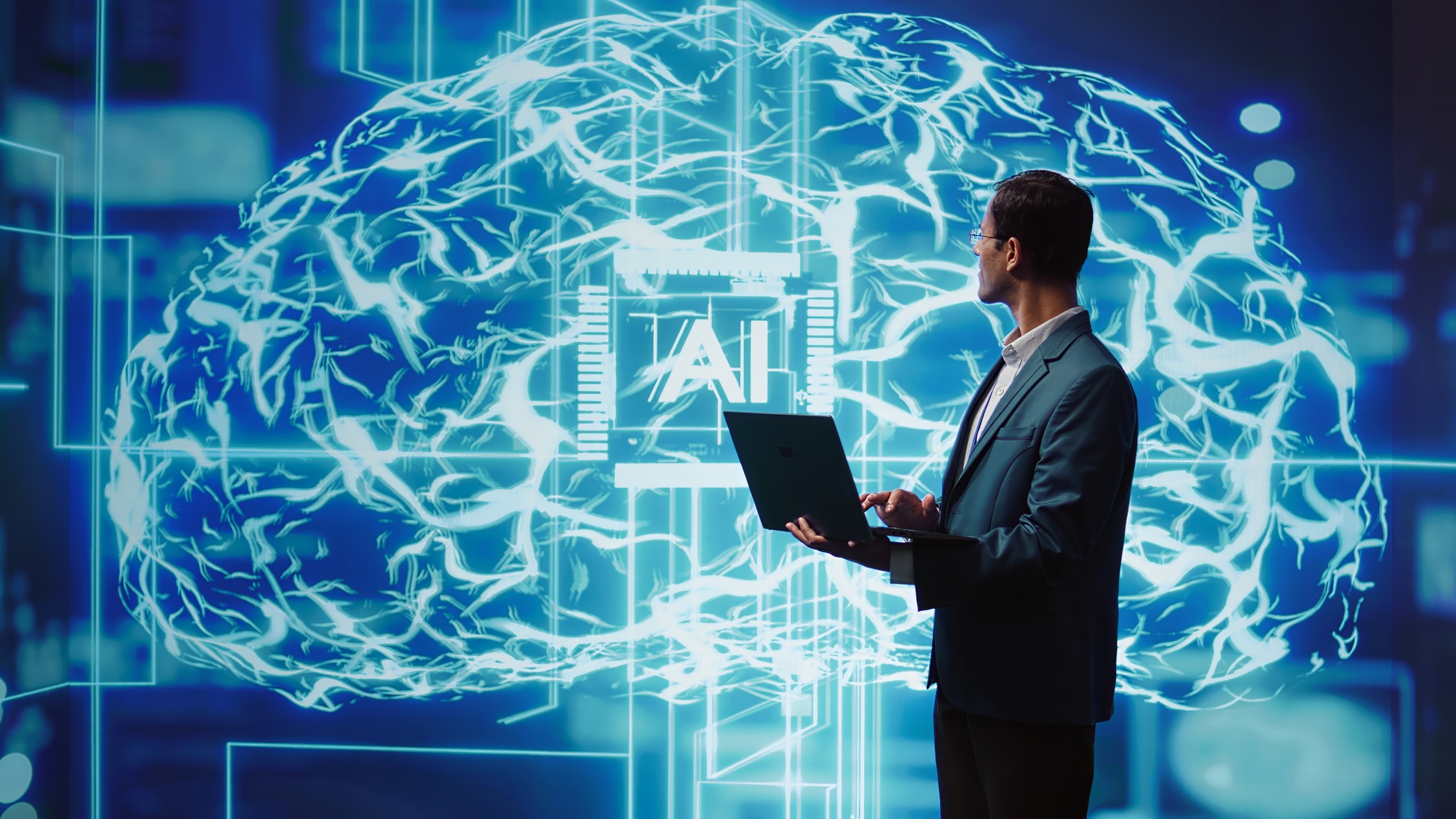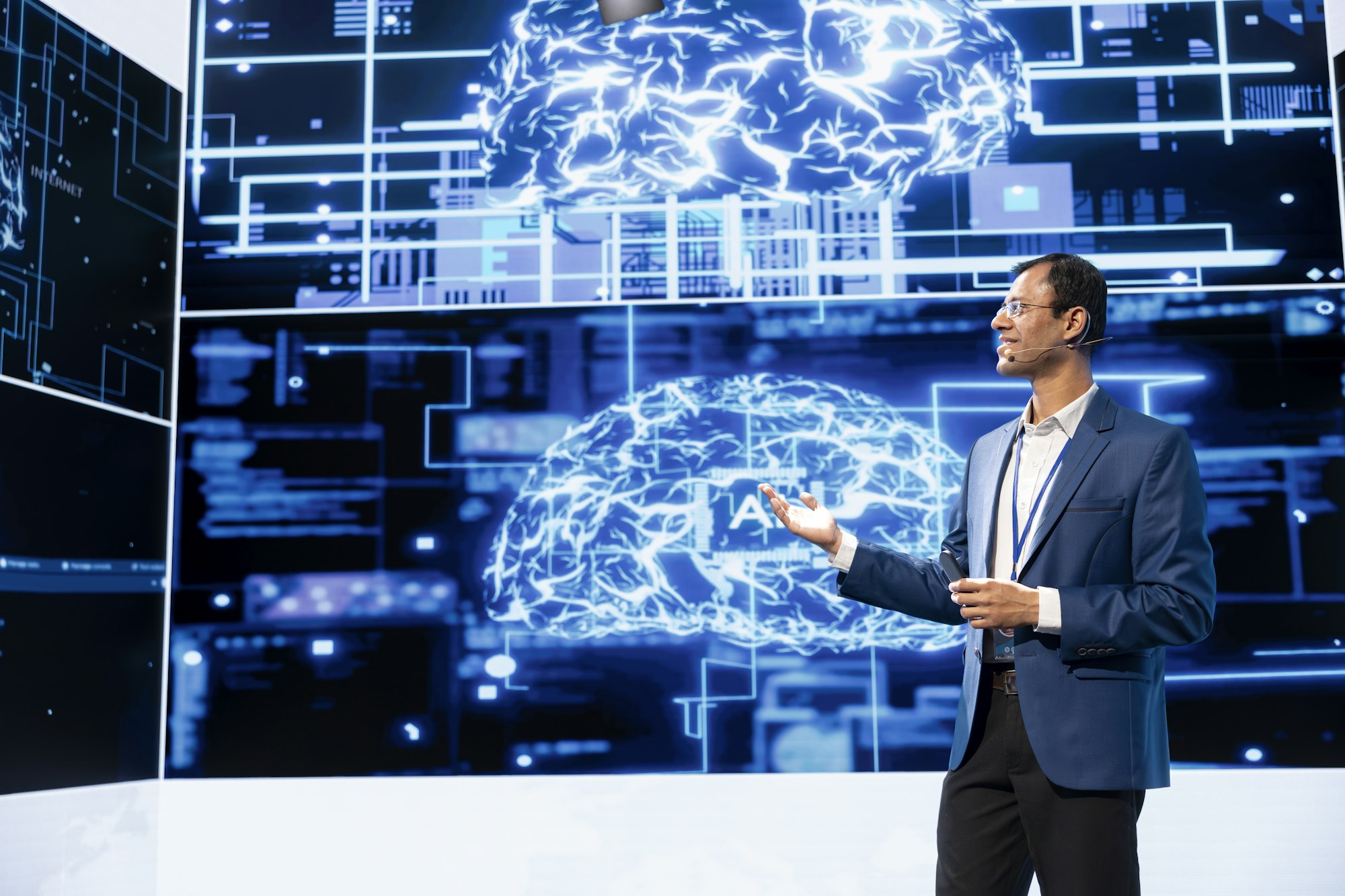Presentation on AI – From Data to Delivery
Table of Contents
Artificial Intelligence (AI) has become a hot topic in recent years, with its potential to revolutionize industries and improve efficiency in various processes. From data collection to delivery of AI solutions, there are several key steps involved in the implementation of AI technology. In this presentation, we will explore the basics of AI, the process of collecting and analyzing data for AI, building AI models and algorithms, implementing AI solutions in real-world scenarios, as well as the challenges and ethical considerations in AI.
We will also discuss the delivery of AI solutions to end users and explore future trends and developments in AI technology.
Key Takeaways
- AI is a powerful tool that can transform businesses and industries, but it requires a clear understanding of its basics and ethical considerations.
- Collecting and analyzing data is crucial for building effective AI models and algorithms.
- Implementing AI solutions in real-world scenarios requires careful planning and consideration of potential challenges.
- Delivering AI solutions to end users involves ensuring that the technology is user-friendly and meets their needs.
- Future trends in AI technology include advancements in natural language processing, computer vision, and the integration of AI with other emerging technologies.
Understanding the Basics of AI

Artificial Intelligence is a branch of computer science that aims to create intelligent machines that can perform tasks that typically require human intelligence. This includes tasks such as visual perception, speech recognition, decision-making, and language translation. AI systems are designed to learn from data, adapt to new inputs, and perform tasks with minimal human intervention.
There are various types of AI, including narrow AI, which is designed for a specific task, and general AI, which aims to replicate human intelligence across a range of tasks. Understanding the basics of AI is crucial for anyone looking to implement AI solutions in their organization. Artificial Intelligence is powered by data, which is used to train AI models and algorithms.
The more data an AI system has access to, the better it can perform its tasks. Data is collected from various sources, including sensors, devices, and databases. Once the data is collected, it needs to be analyzed to identify patterns and trends that can be used to train AI models.
This involves using techniques such as machine learning and deep learning to extract meaningful insights from the data. Understanding how data is collected and analyzed for AI is essential for building effective AI solutions.
Collecting and Analyzing Data for AI
The process of collecting and analyzing data for AI involves gathering large volumes of structured and unstructured data from various sources. This can include data from sensors, devices, social media, and other online platforms. Once the data is collected, it needs to be cleaned and preprocessed to remove any noise or inconsistencies.
This involves tasks such as data normalization, feature engineering, and outlier detection. Once the data is cleaned, it can be analyzed using statistical techniques and machine learning algorithms to identify patterns and trends that can be used to train AI models. Data analysis for AI involves using techniques such as regression analysis, clustering, classification, and anomaly detection to extract meaningful insights from the data.
This can help identify correlations between different variables, predict future outcomes, and detect anomalies or outliers in the data. Data analysis is a crucial step in the process of building effective AI models and algorithms. It helps organizations make informed decisions based on data-driven insights and improve the accuracy and performance of their AI systems.
Building AI Models and Algorithms
| Metrics | Data | Delivery |
|---|---|---|
| Number of Slides | 30 | – |
| Duration | – | 45 minutes |
| Attendees | – | 100 |
| Engagement | – | High |
Once the data has been collected and analyzed, the next step is to build AI models and algorithms that can perform specific tasks. This involves using techniques such as machine learning, deep learning, and natural language processing to train AI systems on large volumes of data. Machine learning algorithms are used to identify patterns and trends in the data, while deep learning algorithms are used to extract complex features from the data.
Natural language processing algorithms are used to understand and interpret human language. Building effective AI models and algorithms requires a deep understanding of the underlying principles of machine learning and deep learning. This involves selecting the right algorithms for the task at hand, tuning hyperparameters, and optimizing the performance of the models.
It also involves testing the models on real-world data to ensure they perform as expected. Building AI models and algorithms is a complex process that requires expertise in data science, computer science, and mathematics.
Implementing AI Solutions in Real-world Scenarios

Once the AI models and algorithms have been built, the next step is to implement them in real-world scenarios. This involves integrating the AI systems with existing processes and systems within an organization. It also involves deploying the AI systems on various platforms such as cloud servers, edge devices, and mobile applications.
Implementing AI solutions in real-world scenarios requires careful planning and coordination to ensure a smooth transition from traditional processes to AI-powered processes. Implementing AI solutions in real-world scenarios also involves monitoring the performance of the AI systems and making adjustments as needed. This can involve retraining the models on new data, updating the algorithms to improve performance, or scaling the systems to handle larger volumes of data.
It also involves ensuring that the AI systems comply with relevant regulations and standards. Implementing AI solutions in real-world scenarios is a complex process that requires collaboration between data scientists, software engineers, and domain experts.
Challenges and Ethical Considerations in AI
While AI has the potential to revolutionize industries and improve efficiency, it also presents several challenges and ethical considerations. One of the main challenges in AI is bias in data and algorithms. This can lead to unfair or discriminatory outcomes, especially in areas such as hiring, lending, and criminal justice.
Another challenge is the lack of transparency in AI systems, which can make it difficult to understand how decisions are made. There are also ethical considerations around privacy and security when it comes to collecting and using personal data for AI. Addressing these challenges and ethical considerations requires a concerted effort from organizations, governments, and society as a whole.
This includes implementing measures to mitigate bias in data and algorithms, increasing transparency in AI systems, and ensuring that personal data is handled responsibly. It also involves developing regulations and standards for the ethical use of AI. Addressing these challenges and ethical considerations is crucial for building trust in AI technology and ensuring that it benefits society as a whole.
Delivering AI Solutions to End Users
Delivering AI solutions to end users involves making the technology accessible and easy to use. This can involve developing user-friendly interfaces for interacting with AI systems, providing training and support for users, and ensuring that the technology meets their needs. It also involves educating users about the capabilities and limitations of AI technology so they can make informed decisions about its use.
Delivering AI solutions to end users requires a customer-centric approach that focuses on usability, accessibility, and transparency. Delivering AI solutions to end users also involves ensuring that the technology is scalable and reliable. This can involve deploying the technology on robust infrastructure that can handle large volumes of data and traffic.
It also involves monitoring the performance of the technology and making adjustments as needed to ensure it meets user expectations. Delivering AI solutions to end users is a continuous process that requires ongoing support and maintenance.
Future Trends and Developments in AI Technology
The field of Artificial Intelligence is constantly evolving, with new trends and developments shaping its future. One of the key trends in AI is the increasing use of reinforcement learning, which enables machines to learn from trial and error. This has applications in areas such as robotics, gaming, and autonomous vehicles.
Another trend is the use of generative adversarial networks (GANs) for creating realistic images, videos, and audio. This has applications in areas such as entertainment, design, and virtual reality. Another trend in AI is the increasing use of explainable AI, which aims to make AI systems more transparent and understandable.
This has applications in areas such as healthcare, finance, and law where decisions need to be justified. There is also a growing focus on ethical AI, with organizations developing guidelines for responsible use of AI technology. The future of AI technology holds great promise for improving efficiency, solving complex problems, and enhancing human capabilities.
In conclusion, Artificial Intelligence has the potential to revolutionize industries and improve efficiency in various processes. From collecting and analyzing data for AI to delivering AI solutions to end users, there are several key steps involved in the implementation of AI technology. Understanding the basics of AI, building effective AI models and algorithms, implementing AI solutions in real-world scenarios, addressing challenges and ethical considerations in AI, delivering AI solutions to end users, as well as exploring future trends and developments in AI technology are crucial for anyone looking to harness the power of AI technology.
As we continue to advance in this field, it is important to ensure that we use this technology responsibly for the benefit of society as a whole.
FAQs
What is AI?
AI, or artificial intelligence, refers to the simulation of human intelligence in machines that are programmed to think and act like humans. This includes tasks such as learning, problem-solving, and decision-making.
What is the purpose of a presentation on AI – From Data to Delivery?
The purpose of a presentation on AI – From Data to Delivery is to provide an overview of how artificial intelligence technologies can be used to process and analyze data, and how the insights gained from this data can be delivered to end users in a meaningful way.
What are some key topics that may be covered in a presentation on AI – From Data to Delivery?
Some key topics that may be covered in a presentation on AI – From Data to Delivery include data collection and preprocessing, machine learning algorithms, data visualization, and the delivery of insights to end users through applications or reports.
Who is the target audience for a presentation on AI – From Data to Delivery?
The target audience for a presentation on AI – From Data to Delivery may include data scientists, business analysts, software developers, and other professionals who are interested in understanding how AI technologies can be used to process and deliver insights from data.
What are some potential benefits of using AI for data processing and delivery?
Some potential benefits of using AI for data processing and delivery include improved accuracy and efficiency in data analysis, the ability to uncover insights from large and complex datasets, and the delivery of actionable insights to end users in a timely manner.
Get 15+ Mio. PowerPoint Assets - FREE SIGN-UP

Sign up for free to our PowerPoint extension, ExpertSlides. Everything you need, directly in PowerPoint. No credit card required.
Related Posts
Recent Posts
- How Do You End a Presentation – Mastering the Last Impression
- Good Color Combinations for Presentations – The Science of Color
- Interesting Ideas for PowerPoint Presentation – Captivate Your Audience
- History Presentation Template – Step Back in Time
- Canvas Presentation Template – Unleash Your Creativity
Main Menu
Knowledge base
Useful Links






